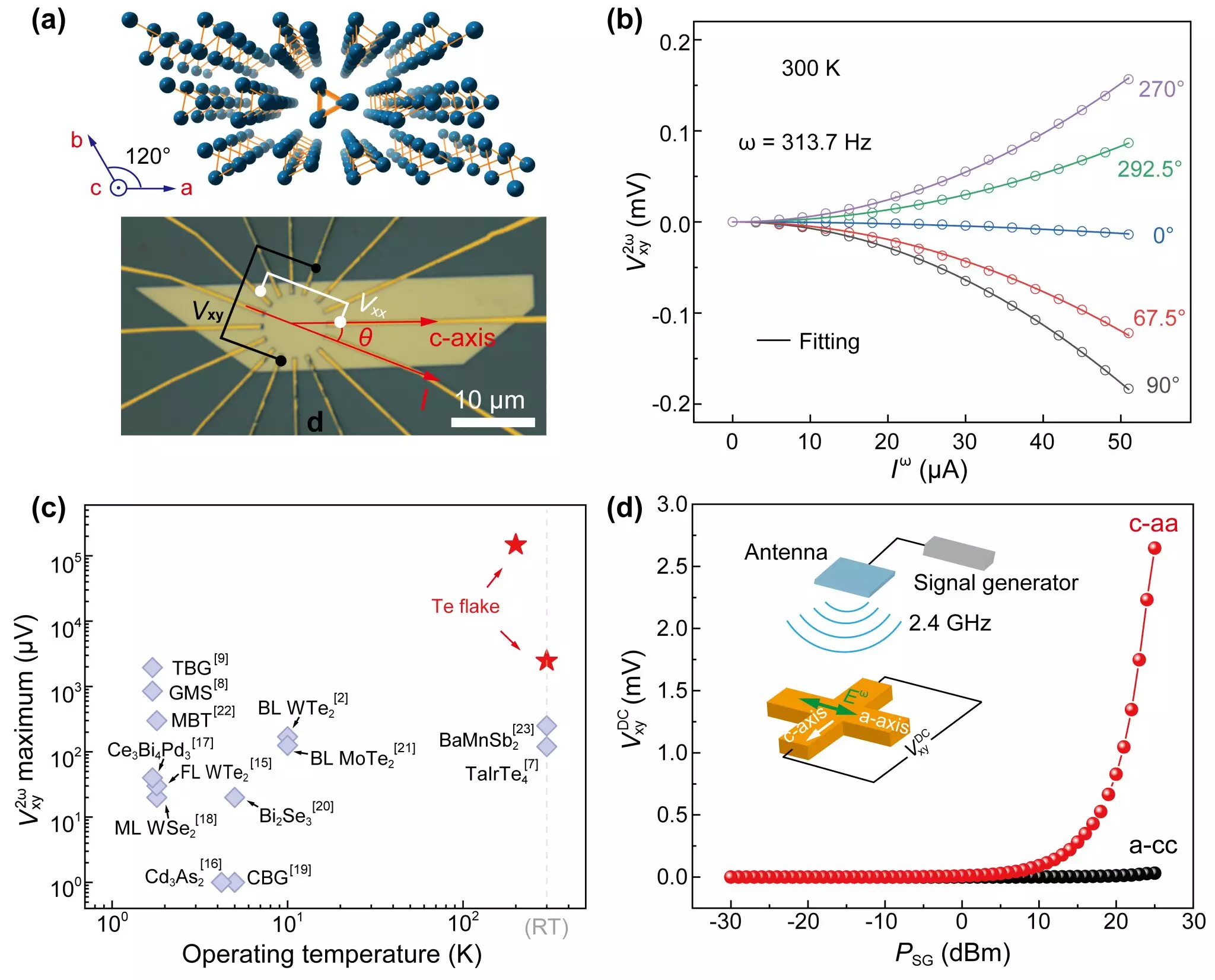Recent advances in semiconductor research have shed light on the remarkable properties of tellurium (Te), particularly in the realm of nonlinear Hall effects (NLHE) and wireless rectification at room temperature. Published in Nature Communications, the findings reveal significant potential applications for this technology in the development of advanced electronic devices, marking a substantial step forward in the capabilities of semiconductor materials.
Historically, the exploration of NLHE has been fraught with challenges, particularly regarding the generation of satisfactory Hall voltage outputs and the necessity for low operational temperatures. Until now, room-temperature NLHE had only been observed in specific materials such as Dirac semimetal BaMnSb2 and Weyl semimetal TaIrTe4, both of which demonstrated limited voltage responsiveness and minimal flexibility. This handicap has stymied the evolution of practical applications, pushing researchers to seek materials with enhanced NLHE attributes.
The Choice of Tellurium
Recognizing these barriers, the research team, led by Prof. Zeng Changgan and Associate Researcher Li Lin from the University of Science and Technology of China, turned their attention to tellurium. This narrow-bandgap semiconductor is characterized by its one-dimensional atom helical chain structures, which possess a natural inversion symmetry break. This unique characteristic makes tellurium an ideal candidate for exploring exceptional nonlinear responses.
The team’s investigation into tellurium thin flakes produced groundbreaking results. At room temperature, they achieved a noteworthy NLHE with tunable Hall voltage outputs adjustable via external gate voltages. At 300 K, they were able to observe maximum second-harmonic outputs reaching an impressive 2.8 mV, an increase by an order of magnitude compared to prior records.
The thorough theoretical analysis and experimentation further revealed that the significant NLHE in tellurium thin flakes is primarily influenced by extrinsic scattering. Moreover, the surface symmetry breaking inherent to the thin flake structure plays a significant role in achieving these impressive results. This newfound understanding sets the stage for not only a deeper comprehension of nonlinear transport in solid materials but also illuminates the pathways for practical applications.
A remarkable spin-off from the NLHE discovery was the ability to realize wireless radiofrequency (RF) rectification with tellurium thin flakes. By replacing the conventional AC current with RF signals, researchers were able to produce a stable rectified voltage over an extensive frequency spectrum ranging from 0.3 to 4.5 GHz. This innovation paves the way for a new class of Hall rectifiers, which diverge from the typical reliance on p-n junctions or metal-semiconductor junctions.
The inherent properties of tellurium allow it to deliver a broadband response while operating under zero bias. This revolutionary characteristic positions tellurium-based technologies as promising candidates for more efficient energy harvesting systems and wireless charging solutions.
The findings from this research initiative not only provide a substantial leap forward in our understanding of nonlinear transport mechanisms but also open up exciting avenues for practical deployment in advanced electronic devices. As we move towards an era that demands more efficient and robust energy solutions, tellurium’s unique attributes may play a critical role in shaping the future of electronics, underscoring the need for continued exploration in semiconductor research.


Leave a Reply